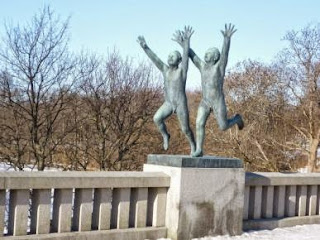Birthplace of Jesus
One of the destinations that I was especially anticipating to visit during my trip to Israel was the Palestinian governed city of Bethlehem. For Christians, this is an important holy site since it was here that Jesus was born. Located on the West Bank, Bethlehem is separated from Israel by the 500km Israeli West Bank barrier. Built by Israel, the “wall” (also known as the Apartheid Wall and barrier) prevents Palestinians from crossing the border. It is filled with graffiti expressing discontent and loss of freedom but also the need for peace. Coming from Jerusalem, I could quickly spot the difference in wealth between Israel and this Palestinian-administered city. Bethlehem’s streets are lined with fast food and souvenir shops in buildings that look aged and forlorn while buildings in Jerusalem are often brand new, streets are sparkling clean and many five-star hotels and high-end boutiques can be found on main arterial roads and side streets.
The highlight of Bethlehem is the Church of the Nativity, Jesus’ birthplace. Built in the 4th century and reconstructed in 565AD, this site is religiously significant to both Christians and Muslims. The holy site is known as the Grotto and the church sits atop the cave where Jesus’ birth took place. Administered jointly by Roman Catholic, Greek Orthodox and Armenian Apostolic authorities, the church is designed like a Roman basilica with a low entrance door, known as the door of humility. Once inside, it’s not difficult to spot the line up to take a glimpse at Jesus’ birthplace. The exact spot is marked by a 14-pointed silver star on marble floor and surrounded by silver lamps. Another altar marks the site where newborn Jesus was laid in the manger. It was pretty weird how I got a rush of memories of singing Christmas carols kneeling at this spot.
One of the destinations that I was especially anticipating to visit during my trip to Israel was the Palestinian governed city of Bethlehem. For Christians, this is an important holy site since it was here that Jesus was born. Located on the West Bank, Bethlehem is separated from Israel by the 500km Israeli West Bank barrier. Built by Israel, the “wall” (also known as the Apartheid Wall and barrier) prevents Palestinians from crossing the border. It is filled with graffiti expressing discontent and loss of freedom but also the need for peace. Coming from Jerusalem, I could quickly spot the difference in wealth between Israel and this Palestinian-administered city. Bethlehem’s streets are lined with fast food and souvenir shops in buildings that look aged and forlorn while buildings in Jerusalem are often brand new, streets are sparkling clean and many five-star hotels and high-end boutiques can be found on main arterial roads and side streets.
The highlight of Bethlehem is the Church of the Nativity, Jesus’ birthplace. Built in the 4th century and reconstructed in 565AD, this site is religiously significant to both Christians and Muslims. The holy site is known as the Grotto and the church sits atop the cave where Jesus’ birth took place. Administered jointly by Roman Catholic, Greek Orthodox and Armenian Apostolic authorities, the church is designed like a Roman basilica with a low entrance door, known as the door of humility. Once inside, it’s not difficult to spot the line up to take a glimpse at Jesus’ birthplace. The exact spot is marked by a 14-pointed silver star on marble floor and surrounded by silver lamps. Another altar marks the site where newborn Jesus was laid in the manger. It was pretty weird how I got a rush of memories of singing Christmas carols kneeling at this spot.
























































